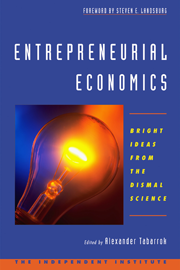At its meeting in December, the American Medical Association debated a proposal that would allow trials in which explicit payments would be used to encourage an increased rate of cadaveric organ donation. Unfortunately, that proposal was tabled. AMA members expect to revisit the proposal at their June meeting, however, and its prospects for passage there appear good. It is difficult to imagine another single policy this organization could adopt that would significantly improve the health of a greater number of patients.
As most people are now aware, there is in this country a severe and growing shortage of cadaveric human organs available for transplantation. Every year, for at least the past 30 years, the number of patients needing an organ transplant—such as a kidney, heart, or liver—has consistently exceeded the number of organs supplied. As a result, more than 50,000 of these patients have died, and it is estimated that less than half of the almost 80,000 people currently on waiting lists will live to receive the needed transplants.
Troubling as those figures are, what is even more disturbing is that most of those deaths could have been avoided by adopting a more intelligent public policy for cadaveric organ procurement. Specifically, the organ shortage is the direct consequence of a longstanding policy that proscribes any payment to families of recently deceased individuals. That is, our organ procurement policy, which was codified into law in 1984, requires that all organ donations (acquisitions) occur at a price of zero. All others in the transplantation process—surgeons, nurses, organ procurement officials, and so on—are paid for their services. But the family of the donor, without whose consent a transplant operation cannot occur, must go uncompensated.
As anyone with basic economic literacy knows, a straightforward solution to any shortage is to allow price to rise to its equilibrium, market-clearing level. The organ shortage is no exception. It is the zero-price policy, and that policy alone, that is responsible for the organ shortage and its associate suffering and death. Consequently, a simple policy change that eliminates the legal constraint on cadaveric organ prices would lead to a substantial increase in the number of organs collected. Waiting lists would decline, waiting times would shorten, and many lives would be saved.
Interestingly, this proposal is not new. It has appeared in the literature on this subject since the 1960s and has gained increasing support since the 1980s. Opposition from the medical community, however, has prevented its adoption (and even, for a long time, its serious consideration).
Expressed ethical concerns have included possible economic coercion of low-income families to supply their organs and the so-called “commodification” of the human body. Certain economic issues have also been raised, such as a decline in the quality of organs acquired and the possible discouragement of purely altruistic donations.
The alleged grounds for such opposition—both ethical and economic—have been successfully rebutted on the basis of both theoretical and empirical considerations. Indeed, a survey of the relevant literature reveals that there is not one single argument in favor of the zero-price policy that has not been examined and rejected by those writing in this area.
The problem, of course, is that, with very few exceptions, the members of the AMA who ultimately will vote on the proposal to conduct trials on payments to organ donors have not read the literature on this subject. Therefore, they are not well-equipped to weigh the merits of the various conflicting arguments.
We can only hope that those who have not read the relevant studies will listen to those who have and that reason will, at last, prevail over uninformed emotion. Too many patients have died in the name of an atavistic policy whose sole “virtue” is that it denies payment to the families of potential organ donors.







